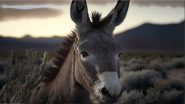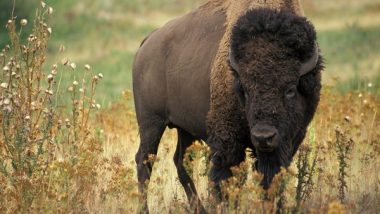Connecticut [US], November 27 (ANI): From the past 50,000 to the past 6000 years, some of the world's largest animals like giant bison, woolly mammoth and ancient horses got extinct. According to a recent study, these were the grazing species and losing them has led to the global increase in fire activity in the grasslands.
The research was published in the 'Science Journal'.
In collaboration with the Utah Natural History Museum, Yale scientists compiled lists of extinct large mammals and their approximate dates of extinctions across four continents.
The data showed that South America had lost the most grazers (83 per cent of all species), followed by North America (68 per cent). These losses were significantly higher than in Australia (44 per cent) and Africa (22 per cent).
Also Read | Maharashtra Shocker: Woman Helps Paramour Rape Her Minor Daughter in Aurangabad, Arrested.
They then compared these findings with the records of fire activity as revealed in lake sediments. Using charcoal records from 410 global sites, which provided a historical record of regional fire activity across continents, they found that fire activity increased after the mega grazer extinctions. Continents that lost more grazers (South America, then North America) saw larger increased fire activity, whereas continents that saw lower rates of extinction (Australia and Africa) saw little change in grassland fire activity.
"These extinctions led to a cascade of consequences," said Allison Karp, a postdoctoral associate in Yale's Department of Ecology & Evolutionary Biology and corresponding author of the paper.
"Studying these effects helps us understand how herbivores shape global ecology today," she added.
Widespread megaherbivore extinctions had major impacts on ecosystems -- ranging from predator collapse to loss of fruit-bearing trees that once depended on herbivores for dispersal.
But Karp and senior author Carla Staver, associate professor of ecology and evolutionary biology in Yale's Faculty of Arts and Sciences, wondered if there was also an increase in fire activity in the world's ecosystems, specifically due to a build-up of dry grass, leaves, or wood caused by the loss of giant herbivores. They found that, in grasslands, grass-fuelled fires had increased.
However, Karp and Staver noted that many ancient browser species -- such as mastodons, diprotodons, and giant sloths, which foraged on shrubs and trees in wooded areas -- also went extinct during the same period but that their losses had less impact on fires in wooded areas.
Grassland ecosystems across the world were transformed after the loss of grazing-tolerant grasses due to the loss of herbivores and an increase in fires. New grazers, including livestock, had eventually adapted to the new ecosystems.
That's why scientists should consider the role of grazing livestock and wild grazers in fire mitigation and climate change, the authors said.
"This work really highlights how important grazers may be for shaping fire activity," Staver said.
"We need to pay close attention to these interactions if we want to accurately predict the future of fires," Staver added. (ANI)
(This is an unedited and auto-generated story from Syndicated News feed, LatestLY Staff may not have modified or edited the content body)













 Quickly
Quickly
















